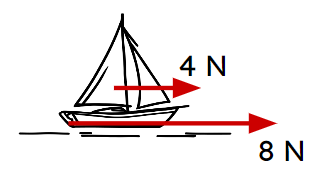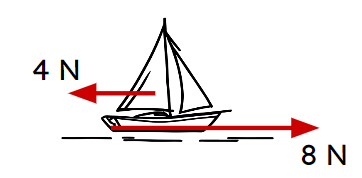Myths about teaching can hold you back
- Year 7
Balanced and unbalanced forces
I can use the idea of resultant force to explain whether a change of speed occurs or not.
- Year 7
Balanced and unbalanced forces
I can use the idea of resultant force to explain whether a change of speed occurs or not.
These resources were made for remote use during the pandemic, not classroom teaching.
Switch to our new teaching resources now - designed by teachers and leading subject experts, and tested in classrooms.
Lesson details
Key learning points
- Two forces of equal size, acting in opposite directions on an object, are balanced.
- The resultant force is the sum of the forces acting on the object, taking into account their direction.
- When forces are balanced there is no resultant force and no change in speed.
- When there are two forces acting in opposite directions, the resultant force acts in the direction of the bigger force.
- The greater the resultant force on a given object, the greater or faster the change in speed.
Keywords
Balanced forces - Two forces of equal size acting in opposite directions on an object, are balanced. They fully cancel each other out so no change is caused.
Unbalanced forces - Unbalanced forces do not fully cancel out.
Resultant force - The ‘force left over’ is called the resultant force. Resultant forces cause changes in speed.
Common misconception
The direction of the (resultant) force shows the direction of motion.
The direction of the resultant force shows the direction of the change (not the direction of motion). Forces make things change.
To help you plan your year 7 science lesson on: Balanced and unbalanced forces, download all teaching resources for free and adapt to suit your pupils' needs...
To help you plan your year 7 science lesson on: Balanced and unbalanced forces, download all teaching resources for free and adapt to suit your pupils' needs.
The starter quiz will activate and check your pupils' prior knowledge, with versions available both with and without answers in PDF format.
We use learning cycles to break down learning into key concepts or ideas linked to the learning outcome. Each learning cycle features explanations with checks for understanding and practice tasks with feedback. All of this is found in our slide decks, ready for you to download and edit. The practice tasks are also available as printable worksheets and some lessons have additional materials with extra material you might need for teaching the lesson.
The assessment exit quiz will test your pupils' understanding of the key learning points.
Our video is a tool for planning, showing how other teachers might teach the lesson, offering helpful tips, modelled explanations and inspiration for your own delivery in the classroom. Plus, you can set it as homework or revision for pupils and keep their learning on track by sharing an online pupil version of this lesson.
Explore more key stage 3 science lessons from the Forces unit, dive into the full secondary science curriculum, or learn more about lesson planning.

Licence
Prior knowledge starter quiz
6 Questions
Q1.What do forces cause?
Q2.Forces make things change. A larger force will cause a bigger or __________ change.
Q3.Which option is the best description of what it means when two things are balanced?
Q4.A person walks 9 metres straight forwards, then 4 metres straight backwards. The result of doing this is they are metres from where they started.
Q5.Forces can change an object's , direction or shape.
Q6.Are the forces on this car balanced or unbalanced?

Assessment exit quiz
6 Questions
Q1.Which image shows balanced forces?




Q2.The resultant force on this car is N.

Q3.Which pictures show a resultant force of 12 N? Tick as many as you think.




Q4.Which would cause an object to change speed?
Q5.The diagram only shows the forces acting on this car, not whether it is moving or not. Which of the following could be happening to this car?

Q6.This car is moving forwards. What happens next to this car, with these forces acting?



